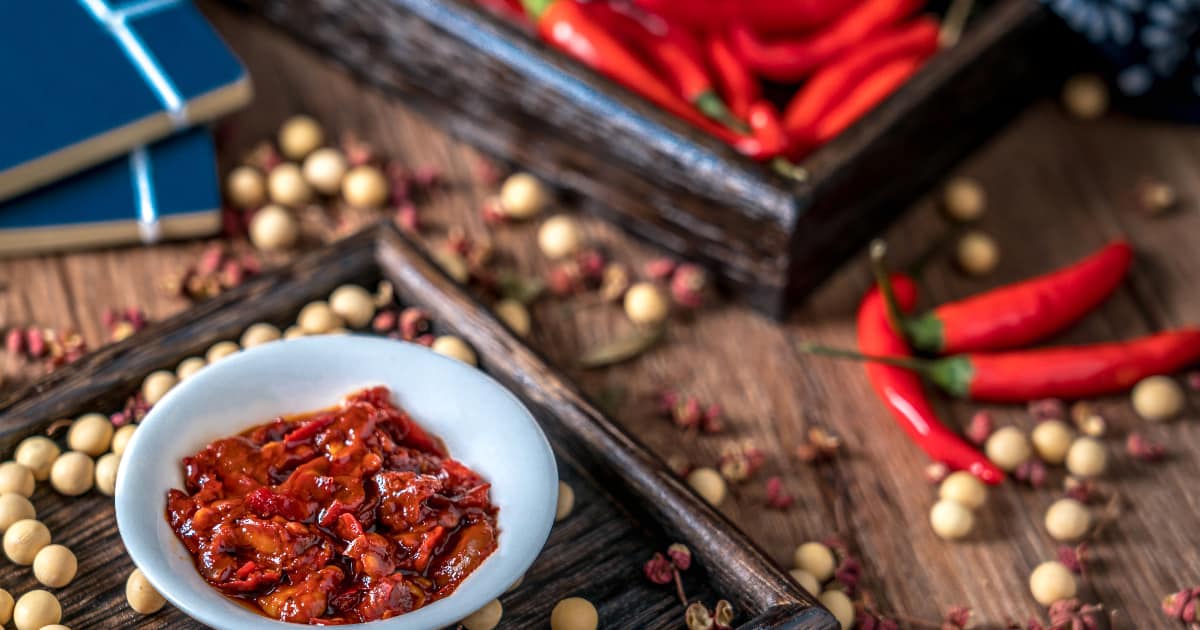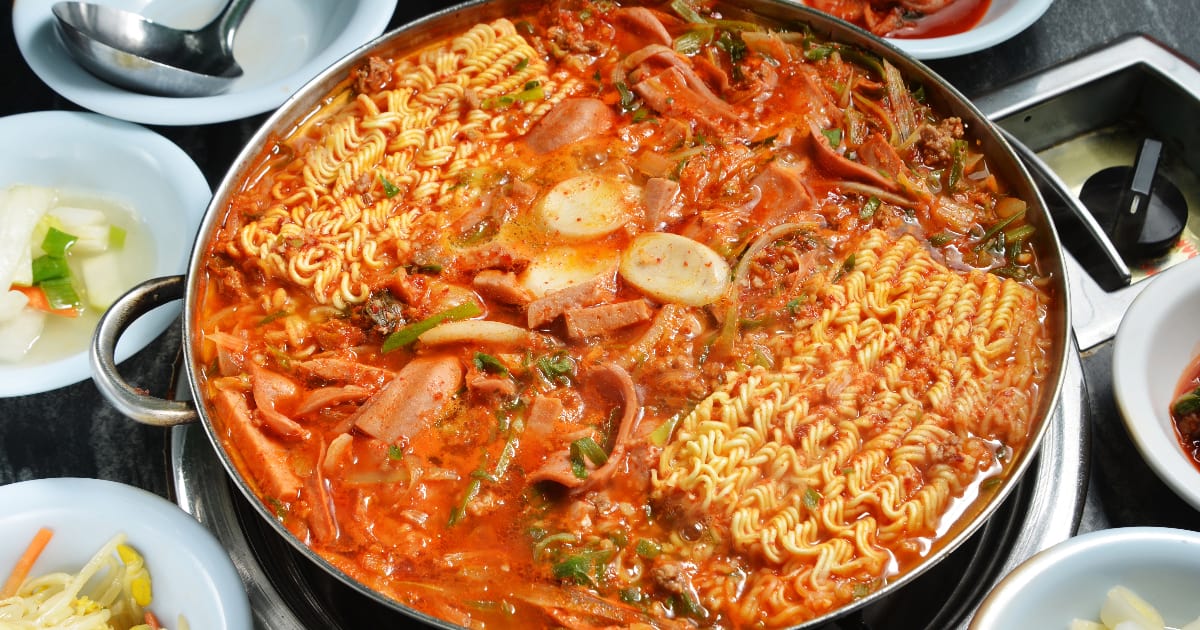Doubanjiang and gochujang are two of the most recognizable chili pastes used in Asian cooking. Both impart deep, complex flavors to dishes and provide a spicy kick of heat. However, while they share some similarities, there are distinct differences between these two powerhouse ingredients.

This guide will explain everything you need to know to understand doubanjiang and gochujang, including their origins, ingredients, flavors, textures, uses, and how to choose between them. Read on to become an expert on these essential components of Chinese and Korean cuisine!
What Is Doubanjiang?
Doubanjiang (pronounced doe-bahn-jeeahng) is a thick, salty paste made from fermented broad beans, soybeans, salt, and chili peppers. It originates from Sichuan province in southwestern China and is a defining ingredient in Sichuan cuisine.
Doubanjiang is also referred to as chili bean paste, spicy bean paste, or broad bean chili sauce. However, the terms "la doubanjiang" or "Sichuan doubanjiang" specifically indicate the spicy versions used in Sichuan cooking.
Sichuan doubanjiang has a coarse, chunky texture from bits of bean and chili throughout the paste. It is an intense reddish-brown color. The paste is made by fermenting the beans and chilies together, which creates complex, savory umami flavors.
Doubanjiang provides a spicy, numbing heat along with a fermented savoriness. It has very little sweetness. The salty, savory qualities make it ideal for bold Sichuan dishes like mapo tofu, twice-cooked pork, and dan dan noodles.
What is Gochujang?
Gochujang (pronounced go-choo-jahng) is a sweet and spicy Korean chili paste. It consists of fermented soybeans, glutinous rice powder, red chili powder, and salt.
The fermented soybeans provide an umami depth, while the rice powder contributes sweetness. The chili powder brings a vibrant red color and slow-building heat. Additional ingredients like mugwort or sweet potato may also be used.
Gochujang has a smooth, rich texture. The distinct sweet-spicy-umami flavor profile makes it integral to Korean cooking. It is used to season meat dishes like bulgogi and spice up stews like kimchi jjigae. Gochujang also serves as a condiment for bibimbap.
Compared to doubanjiang, gochujang is sweeter, less salty, and has a velvety texture. It caramelizes quickly when cooking, so requires lower heat. The fermented flavors are more subtle than pungent doubanjiang.
Key Differences Between Doubanjiang and Gochujang
While doubanjiang and gochujang share some common ground as fermented chili pastes, there are several important distinctions:
- Origins: Doubanjiang is Chinese, while gochujang is Korean
- Main ingredients: Doubanjiang uses broad beans, while gochujang uses glutinous rice
- Texture: Doubanjiang has a chunky, coarse texture and gochujang is smooth
- Flavor profile: Doubanjiang is very salty, savory, and spicy, with little sweetness. Gochujang has a balanced sweet-spicy taste.
- Spiciness: Doubanjiang tends to be spicier and more numbing than gochujang
- Fermentation: Doubanjiang ferments for a longer period (up to 3 years) compared to gochujang
- Uses: Doubanjiang seasons Sichuan dishes, while gochujang is used in Korean cooking
So in summary, while both pastes pack a spicy punch, doubanjiang veers savory, and gochujang trends sweet. The textures are also contrasting. These differences mean they aren't directly interchangeable in recipes.
Using Doubanjiang in Cooking
Doubanjiang shines in the spicy cuisine of Sichuan. It is typically fried briefly in oil at the start of cooking to coax out the aromas and color the oil crimson. Other ingredients like chicken, tofu, or vegetables are then added to absorb the doubanjiang flavors.
Classic Sichuan dishes utilizing doubanjiang include:
- Mapo tofu: Silky tofu and ground pork are simmered in a spicy sauce of doubanjiang, fermented black beans, and peppercorns
- Twice-cooked pork: Pork belly is boiled, sliced, then wok-fried with doubanjiang
- Dandan noodles: Chewy noodles are served with a salty, nutty sauce made with doubanjiang, sesame paste, and preserved vegetables
- Hot pot: Doubanjiang and chili oil are swirled into the broth to give it a spicy, umami depth
When cooking with doubanjiang, reduce additional salt, as the paste itself is quite salty. Go easy on soy sauce as well. Doubanjiang should be used in moderation - a little goes a long way, especially in its spicy Sichuan form.
Using Gochujang in Cooking

In Korean cooking, gochujang is used both as an ingredient while cooking and as a condiment served tableside.
Here are some classic ways to utilize the sweet-spicy paste:
- Marinades: Mix gochujang into bulgogi or kalbi marinades
- Stews: Add depth, color, and gentle heat to stews like kimchi jjigae and budae jjigae
- Salad dressings: Whisk gochujang into the dressing for vegetable salads
- Bibimbap: Swirl the paste into the bowl to mix with vegetables, meat, and rice
- Dipping sauce: Blend gochujang with ingredients like vinegar, sesame oil, and garlic for dipping
- Stir fries: Quickly cook meat or veggies with a bit of gochujang
Gochujang has a mellow fermented flavor, so it can be used more liberally compared to doubanjiang. Still, add a little at a time until you achieve the desired sweet-spicy balance.
Substituting Doubanjiang and Gochujang
While doubanjiang and gochujang have unique flavors, in a pinch, you can substitute one for the other with a few adjustments:
- To replace doubanjiang, use gochujang diluted with water, plus extra chili flakes for heat. Add a pinch of sugar to balance the sweetness.
- To sub gochujang, use doubanjiang diluted with water or oil. Add honey or sugar to compensate for the lack of sweetness.
You can also substitute other umami-rich pastes like miso or ssamjang. The flavor won't be exact, but can work in less traditional dishes. Consider the saltiness and spiciness of the original ingredient and adjust the seasoning accordingly.
How to Choose Between Doubanjiang and Gochujang
So when should you use doubanjiang compared to gochujang? Here are some factors to help decide:
- Cuisine - Use doubanjiang for Chinese cooking and gochujang for Korean
- Recipe - Follow the specific paste called for in traditional recipes
- Flavor - Choose doubanjiang for intense umami and salt or gochujang for sweet-spicy
- Heat level - Pick doubanjiang if you want more numbness and heat
- Texture - Opt for smooth gochujang or chunky doubanjiang based on preference
- Availability - Doubanjiang is easier to source than Gochujang in some areas
With this guide comparing the origins, ingredients, uses, flavors, and textures of doubanjiang and gochujang, you are ready to start cooking with these iconic chili pastes!
Frequently Asked Questions
Can you substitute doubanjiang for gochujang?
You can substitute doubanjiang for gochujang, but the flavor will be quite different. Dilute the doubanjiang and add sugar or honey to balance the sweetness. Also, boost chili flakes for extra heat.
Is doubanjiang spicy?
Yes, Sichuan-style doubanjiang is known for its spicy, numbing heat. The intensity varies by brand. Check for words like "la" or "spicy" on the label for the hot versions. Non-spicy doubanjiang also exists.
What is the difference between doubanjiang and chili oil?
While both are spicy, doubanjiang is a thick paste made from fermented beans and chili. Chili oil is vegetable oil infused with chili flakes and spices. Doubanjiang is an ingredient, while chili oil is used as a condiment.
Can you cook with gochujang?
Absolutely! Gochujang is very versatile in cooking. You can mix it into marinades, stir-fries, stews, dressings, and more. It enhances flavor and provides gentle heat. Just don't let it burn, as it scorches easily.
What's a good substitute for gochujang?
Sriracha or sambal oelek work as substitutes, or you can make a quick gochujang approximation by mixing miso paste with rice vinegar, chili flakes, sesame oil, and honey or brown sugar.
Is gochujang supposed to be thick?
Gochujang should have a rich, thick texture. It is a paste, not a sauce. If your gochujang seems thin and watery, it may have separated during storage. Try stirring the liquid back into the solids before using it.
Conclusion
Doubanjiang and gochujang both provide deep umami flavor and spicy heat to Chinese and Korean dishes respectively. While they share some commonalities, there are distinct differences in their ingredients, texture, saltiness, and sweetness that make them unique.
Understanding when to use each paste will help unlock authentic Asian cuisine. With this guide, you now have an expert grasp of how to cook with doubanjiang and gochujang!

